Aichi B7A2 Ryusei Kai (Grace) – Hasegawa 1/48
Here is my Aichi B7A2 Ryusei Kai ("Shooting Star") "Grace" torpedo bomber. The Grace was a late-war addition to the IJN's air arm and saw some limited action before the war ended. 105 production B7A2s were built at two factories. It was strictly based on land as the last of the IJN Carriers on which it was meant to serve were sunk by US submarines. If manufacturing standards has been been better, particularly for the Homare engine, it would have been a real performer and a formidable foe. It was fast at 352 mph and more maneuverable than the A6M Zero in combat trials. As it turned out, of course, the Allies overwhelmed Japanese defences before the Grace could be seriously tested against allied fighters.
This was meant to be a quick project, but it took longer than expected to get the details done right. When I started out, I hadn't located the Eduard interior set, so I went with careful painting and IP decals in the kit. I did add Eduard color IJN seat belts, however, of the "Aichi" pattern. You can follow how this all went together in the Group Build for Pacific Theater here - if you are interested:
I decided to close up the canopy, partly because I was not happy to have used the kit interior (not up to my normal standards) and also because I love the lines of the Grace with the everything closed up. I have since bought the Eduard set, so I will do another one of these kits with the full interior plus a vac canopy I have on hand, since the kit parts are a bit thick for display in the open position. Too bad this version won't be able to compete in contests, given an open canopy is IPMS standard as I understand it.
All markings except the under wing hinomarus are done with Montex stencils. That includes the yellow tail codes, which turned out much better than I expected. I did a marbling pre-shade approach to the otherwise uniform very dark Tamiya XF-11 IJN Green. Some of the close-up photos reveal this pretty well, but it is very subtle. Panel lines were highlighted with oil paints, as well as further wear and tear with more oil streaking and some work with pastels for the exhaust stains. The long lance torpedo is done with Vallejo Metal Color Semi matte Aluminum with Tamiya Semi-Gloss Black for the warhead. I hand painted the wooden tail assembly with Tamiya Wood deck Tan with a grain brushed on from Windsor and Newton Van Dyke Brown. I did all the chipping with a Prisma Color silver pencil. I don't like going overboard on paint chipping and photos show these aircraft did not have much time to weather much.
The Montex masks for the canopy worked very well. I have heard many complaints about their leaving sticky residue, but I had no problems any worse than kubuki tape masks. I cleaned a bit of residue with a finger nail clipping (I know, yuck!), which is gentler than using a toothpick and won't leave scratches. I also polished inside some panels with Novus #1 Clean and Shine - I love this stuff and also treat the clear parts to a polish before affixing the masks.
As for the rest of the build, I will let the pics speak for themselves. Otherwise, you can check out the GB. Hope you like it. Happy modeling.
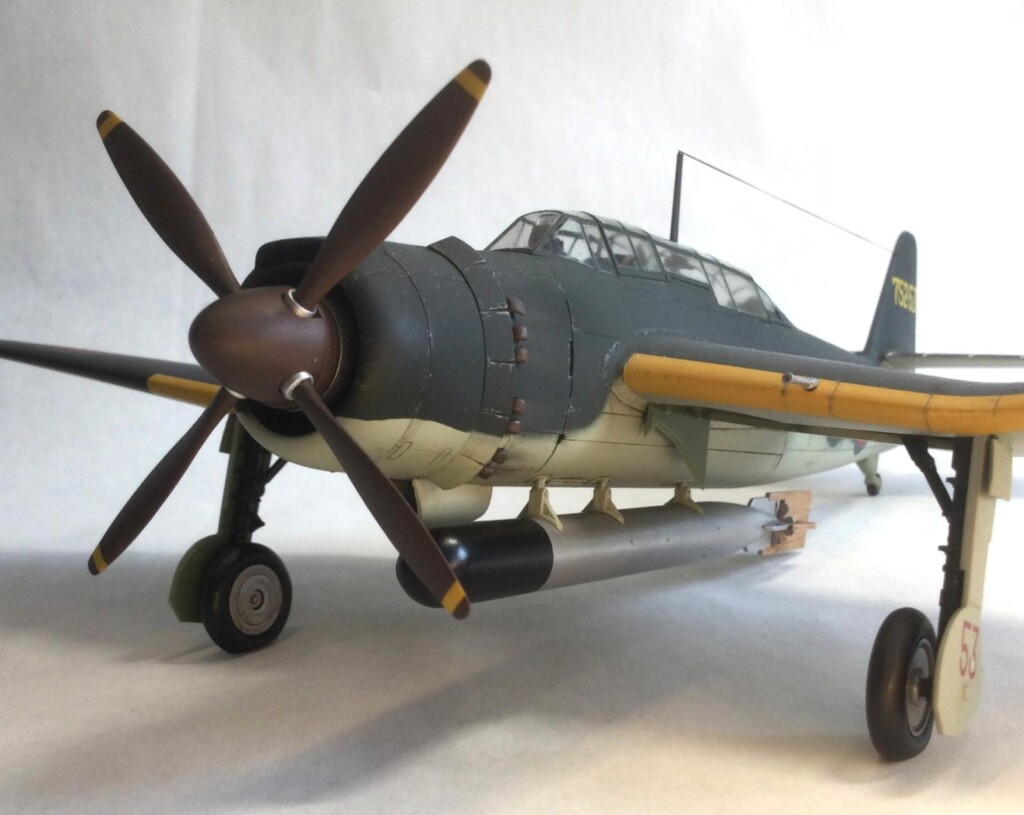
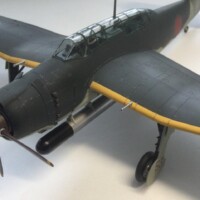
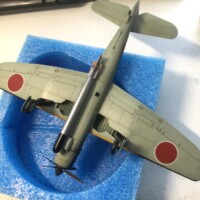
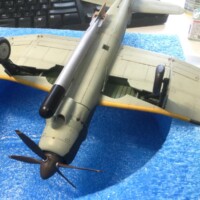
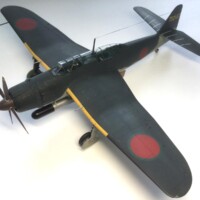
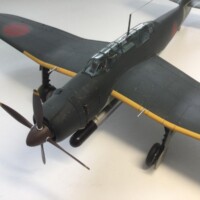
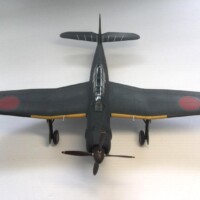
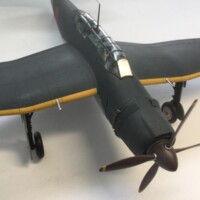
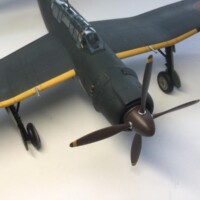
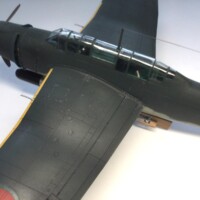
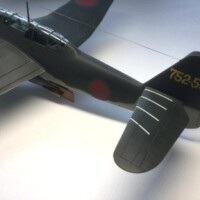
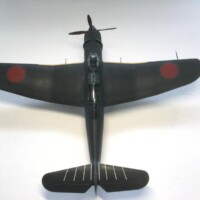
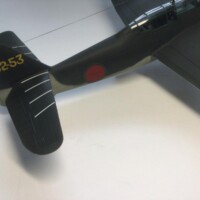
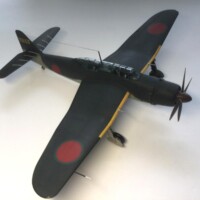
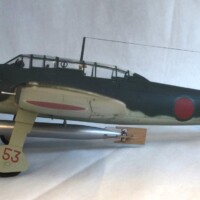
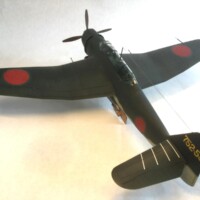
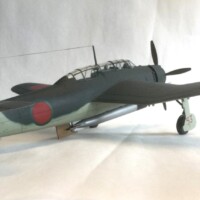

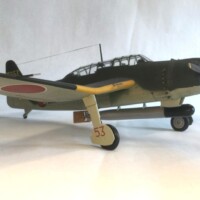
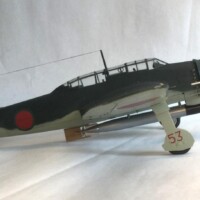
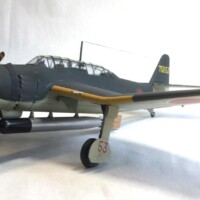
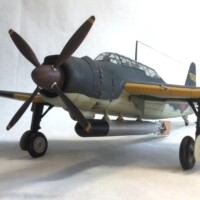
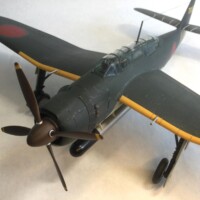
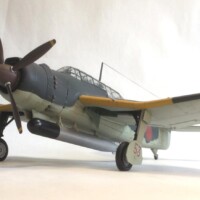
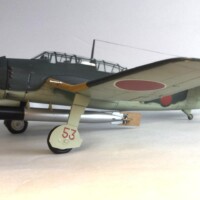

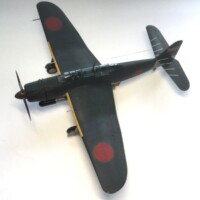
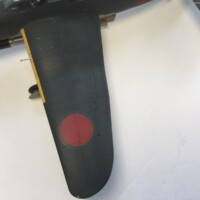
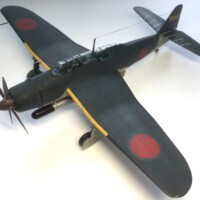
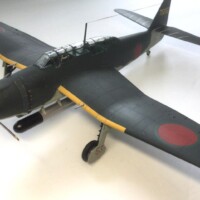
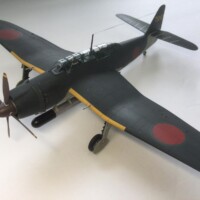
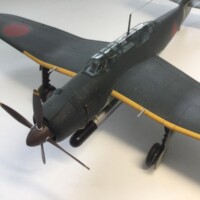
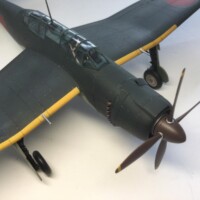
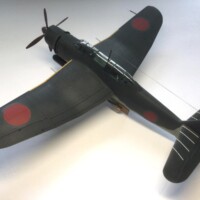
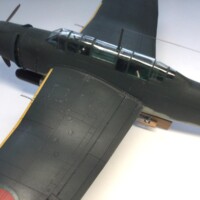
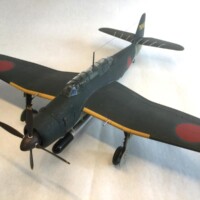
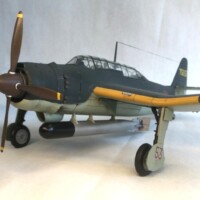
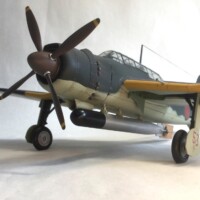
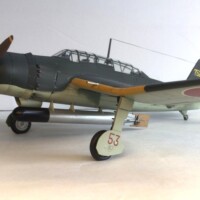

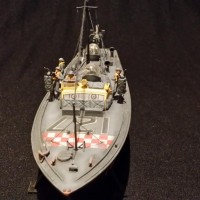
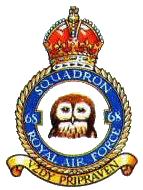
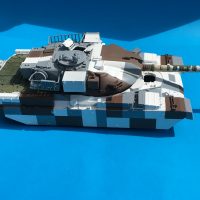
Impressive work!
Thank you, Bernard @lis. Thanks also for the invitation to the Pacific Theater group build. It has been fun and a relaxing forum to do some builds I had planned for some time. My B5N Kate is coming along as well so maybe in headlines soon.
Nice job, Colin!
Thank you, Gary. I'm glad you like it. Not so many of these built but a great kit of a beautiful airplane.
Beautiful big bird, nicely built. Good thing these didn't get built a lot. Looks like a post war Martin Mauler.
Thanks, Bill. Yes it is a brutish-looking beast. Interesting to think that it was also incredibly nimble. They would have been hard to shoot down, and might even have fared well in a dogfight. I see what you mean by the Martin Mauler comparison. With the inverted gull wing, it also has similar lines to the A-7M Reppu.
It would have done all those things if they'd had pilots with the ability. I have reports on claims for a couple of these, and from the claim, it looks like the pilot didn't have the skill to get out of his own way. Post war testing revealed this would have been the best carrier attack plane the IJN had, if they'd had carriers and crews.
Great looking build and a great looking aircraft as well.
Thanks, Jeff. Late war Japanese aircraft were very impressive and often beautiful designs. Lucky for the allies, they could not get them built to a reliable standard.
You did an amazing job on this one, Colin @coling
It was a pleasure to follow your learningfull and informative thread.
Hard to believe that this aircraft could outperform the Zero based on the looks.
Thanks, John. It was very motivating and helpful to have your comments along the way in the GB.
Amazing job, Colin, up to your usual supreme standards! A very informative article, backed up with an equally informative build thread.
Congratulations!
Thanks, Spiros. I really appreciated your support and interest during the build. Feels good to get this one done.
Beautiful build, Colin! I agree with you about late-war Japanese aircraft -- they had some nice-looking designs.
Thanks, Mike. I think it is great how well Hasegawa covers late-war IJN and IJA designs. They know their stuff and provide excellent detail to work with out of the box. I would like to do a Seiran some time after I get my Kate done.
Excellent results on a less known but beautiful plane.
Thanks, Marcello. I am glad you like it. Japanese designs have a unique grace and power to them, in my opinion.
Very nice work, Colin, I especially like the details on the spinner as featured in the heading picture.
Thanks, George. I was able to leave the prop assembly off until the very last minute. That allowed me to attach the spinner temporarily with white glue, paint the red brown overall and the yellow warning stripes, then remove the spinner to hand paint the prop cuffs with Rub n Buff. I could then glue the spinner permanently over the finished prop. It turned out to be a good method to keep it all looking clean without smudging color anywhere. BTW, I do a lot of metal details with Rub n Buff, it goes on very smooth and can be worked easily to look even smoother, like real metal.
Yes sir, that is beautiful scale modeling! 😁 A great looking and seldom seen Japanese aircraft, built to a high standard...makes for a very interesting article! Well done Colin @coling. 🍻
Thanks, Gary. I learn something with every build. I learned a lot about careful masking and controlling paint flow around stencils with this one. Getting a good finish also required patiently fixing a lot of little errors along the way. That's what modeling is all about, from my point of view.
Great build, and nice wood work on the torp fin. Well done!
Thanks, Greg. And special thanks for noticing the wood-grain. It was fun to do. Painting with oils right over top of the flat Tamiya acrylic was taking a chance for me, but it worked quite well. I will try this approach to "wood" in the future when I do cockpit floors, wooden props.etc.
Great build, paint work and finish is excellent!
Thanks, David. I do the best I can with the finish knowing how unforgiving close-ups can be when you finally upload an article. This one came out OK.
Great job Colin!
Thanks, Bob. It is kind of you to take the time to comment. Glad you like it.
Wow, this looks great, Colin (@coling). The exterior looks perfect, as befitting a newer plane that hasn't seen a lot of abuse from desert sand, sun, etc. Knowing your standards, I would also bet that the interior is also done to a high standard, even without photoetch. I have reached an age where painting my own instrument panels are probably out of the question, so I rely on photoetch. I have been doing a bunch of reading about the Japanese naval bombers and I want to try to do one of each. I have all of them in my stash except for the C6N, which was technically not a bomber, but it was used as a kamikaze aircraft late in the war. I have one on the way. I plan to make some masks for the markings on some of the planes. Do you remember what brand/color you used for the hinomarus? The color looks perfect.
Thanks, George. I'm happy you get why I took a less drastically weathered approach . A lot of IJA and IJN aircraft were flown almost straight out of the factory in the defence of the homeland and of course many were shot up and shot down long before the paint could flake off, fade or scuff up drastically. You can see how I did the interior in the GB, if you want. Some modelers use more of the blue-green Aotake color than I did for the interior, but it was clearly an undercoat covered by Aichi Interior Green when the finish was fresh.
The C6N Myrt is another ground-breaking late war type. Even though it was mostly a reconnaissance aircraft, there was a night fighter version as well. I guess you have the fine Hasegawa 1/48th version on order. I'll be looking forward to your take on the subject.
I use Tamiya XF-7 Flat Red for the hinomarus. For this aircraft, I laid it out straight on the IJN Green, which leaves it fairly subdued. Other times I might put down a base coat of Flat White to brighten up and deepen the red a bit.
What a brute, Colin. Well done! I would have never thought that this plane had that kind of performance.
Thanks, John. The Japanese seem to have gotten maneuvering flaps down to a real science. They were finally able to get awesome turning performance out of a very heavy airframe, which allowed them to add armor, self-sealing fuel tanks and the like. I think that's how they did it with the Grace, as with the George and the Frank. If they had had a properly functioning Homare engine on top of that, aircraft like the Grace would have been unbeatable, which I guess was their aim. The Japanese were and are superb and ingenious engineers - lucky for us in the post war world of compact cars and Walkmans.
I really like this. I don’t think I have ever seen one built up. I’m tempted to go buy the C6N kit!
Thanks, Christian. I hope you go for the C6N Myrt. Interesting and seldom seen subject. You don't see too many B6N Jills built up either. Hasegawa has all these covered nicely.
Great work as usual @coling. Was a privilege to follow the effort in t he WIP. A superb result.
Thanks, Tom. I am glad you enjoyed the build as it progressed. I have learned a lot from following documented techniques in the the various GBs. I am happy we have so many on the go now. Thanks also for your added comment above on the Grace's performance. It is true that the Allied approach to training quality aircrews at a faster rate eventually overwhelmed the slower, and more elitist Japanese system, which had to be abandoned in the end.
Superb !
Thank you, Paulo. I appreciate your kind words.
Excellent, Colin @coling. Interesting that the torpedo (nice touch with the wood fins) is not centerlined but I can see why. "Liked".
Thanks, Eric. The B5N Kate and B6N Jill also had offset torpedoes. I guess it worked better that way somehow. I am also building a Savoia-Marchetti SM.79 torpedo bomber version. The real aircraft ended up with an offset torpedo after experience showed that the twin torpedoes it had previously carried really interfered with the aerodynamics. Apparently it handled very much better with one offset. Not sure why, but someone on the site might know.
Fine work all around!
Thanks, Dale. Glad you like it. Kind of you to comment.
Great job on that Ryusei. I like the wood detail on the torpedo fins. It's fortunate for the Allies that they didn't work out the problems with the Homare engine and get this beast mass produced!
Thanks, Chas. The allied strategy of bombing Japanese airplane and engine factories paid off, but nature sometimes helped, apparently. The Funakata factory where 80 B7A2s had been built was completely destroyed by an earthquake in May, 1945.